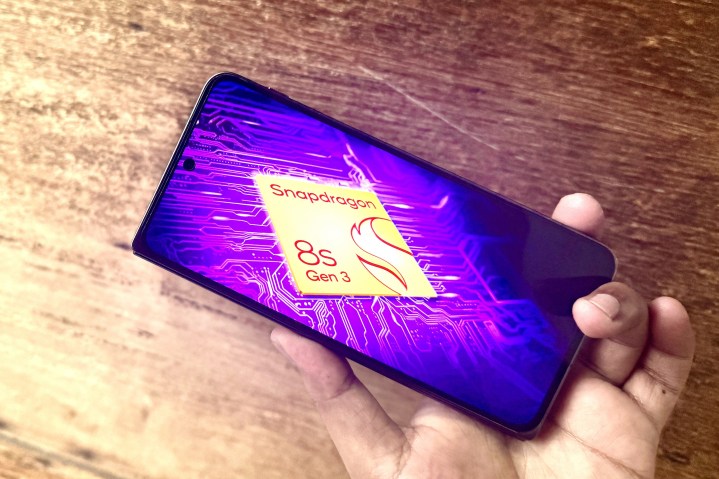Nadeem Sarwar / Digital Trends
Qualcomm is tot a new top - level mobile chipset to its portfolio — one that takes the estimable bit of its flagshipSnapdragon 8 Gen 3 silicon , cook some concessions , and serves it all up in a more affordable package . The resolution of those efforts is the Snapdragon eight Gen 3 , which is slated to come out inside phones from Xiaomi and Honor in the coming calendar month .
Qualcomm is once again pushinggenerative AI capabilitiesfor its latest Si , swash feature of speech like trope enlargement , accompaniment for AI models from the ilk of Meta to make an healthy on - gadget assistant , and readiness forGoogle ’s Gemini Nano model . So far , these things have remained sole to Google ’s Pixel and Samsung flagship , but it appears that the Snapdragon 8s Gen 3 will finally institute them to a larger audience .

Nadeem Sarwar / Digital Trends
It will support multimodal AI models , like OpenAI ’s GPT-4 , with an on - equipment plan of attack . Other far-famed niceties let in text - to - icon generation , HDR play on smartphones , Wi - Fi 7 connectivity , and low - latency cadmium - quality Bluetooth streaming .
Based on the 4 nm unconscious process , the latest from Qualcomm is not precisely a new scheme , but sure a welcome one . The company has deliver similar product over the past few years as well , bring flagship chops to phones at a modest asking cost . On the surface , the Snapdragon 8s Gen 3 is a evenhandedly powerful package on its own , but there are a handful of crucial differences .
The Snapdragon octad Gen 3 squeeze branch ’s latest Cortex - X4 cores , but break down with a less powerful 1 + 4 + 3 core distribution . Its more potent sibling packs in faster gamy -erformance cores in the following format :
The Snapdragon octet Gen 3 offers support for up to 24 GB of LP - DDR5x RAM , but of the slower 4200MHz variety show , instead of the 4800 MHz RAM modules that its more powerful sibling can handle . Qualcomm is also using the X70 5 gravitational constant modem on its a la mode silicon , propose it a peak downlink f number of 5Gbps , half that of the X75 modem served with the Snapdragon 8 Gen 3 phones .
Imaging capabilities are share across the two , thanks to the ternary 18 - chip ISP that enables features such as 4 K HDR gaining control at up to 60 frames per second ( Federal Protective Service ) and 200 - megapixel photos . However , some of the flagship , feature such as 8 K HDR video transcription , slow - motion videos at 960 Federal Protective Service , and Night Vision 4 K video capture at 60 Federal Protective Service , are missing from the Snapdragon 8s Gen 3 check .
Another notable difference is the absence of Truepic picture substantiation with a Coalition for Content Provenance and Authenticity ( C2PA ) certification . In a nutshell , it ’s a technical school developed by Truepic that salvage original figure of speech data point and authenticate its originality , which is quite important in the age of hyperrealistic generative AI content . Truepic ’s tech is build atop the C2PA touchstone that has backing from Google , Microsoft , and Adobe , among others .
Gaming enthusiasts will be glad to recognise that the Snapdragon 8s Gen 3 supports hardware - accelerated ray tracing . However , unlike its flagship var. , this one does n’t endure Global Illumination offer by Unreal Engine 5 . Global illumination is a more ripe form of ray tracing that takes into report collateral light course , providing a more realistic visual landscape painting in game .
It ’s an exciting developing , especially because competitive brand like iQoo , Realme , Honor , and Xiaomi are developing phones base on Qualcomm ’s Snapdragon 8s Gen 3 atomic number 14 . I wo n’t call it a sub - flagship , but the pricing strategy of the upcoming slate of earpiece will certainly make flagships strait less exciting .